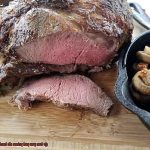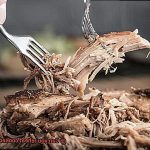Are you tired of the same old holiday ham and looking to spice things up this year? Well, have no fear – turkey may just be the solution you’ve been searching for. In this post, we’ll dive into the question on everyone’s mind: can you replace ham with turkey?
You might be skeptical at first. After all, ham and turkey are vastly different in taste and texture. But don’t worry, we’ve done our research and are here to share all the information you need.
We’ll explore the main differences between these two popular holiday meats, from their flavor profiles to their nutritional content. And if you’re worried about cooking a juicy and delicious turkey that will impress your guests, we’ve got some tips and tricks up our sleeves.
So whether you’re a seasoned chef or a novice in the kitchen, this post has something for everyone. Join us as we discover whether turkey can truly take the place of the classic holiday ham.
Contents
What is Ham?
Ham, a savory meat that comes from the hind leg of a pig, is a versatile ingredient that can be cooked in various ways. It is a popular choice for holiday meals and is often served sliced and glazed with a sweet sauce. But did you know that there are many different types of ham available, each with its own unique flavor? From country ham, which is salt-cured and aged for several months, to honey-baked ham, glazed with a sweet honey sauce, the options are endless.
Aside from being delicious, ham is also a good source of protein and essential nutrients such as iron and zinc. However, it is high in sodium and fat, so moderation is key when incorporating it into a healthy diet.
For those who cannot eat ham due to dietary restrictions or personal preferences, turkey can be an excellent alternative. Turkey is a leaner meat with a milder flavor that can be used in various dishes.
When it comes to grilling, replacing ham with turkey requires some adjustments. While turkey breast is a good option as it is leaner and healthier than other parts of the bird, it tends to be drier than ham. To combat this, marinating beforehand can add flavor and help keep it moist. Cooking turkey on the grill also requires indirect heat – placing it away from the direct flame or coals so that it cooks more slowly and evenly. Wrapping the turkey in foil can also help retain moisture.
What is Turkey?
Perhaps your thoughts immediately turn to the succulent meat that’s commonly consumed during holidays like Thanksgiving and Christmas. But did you know that turkey is actually a large bird native to North America? As an expert on this topic, let me take you on a journey to discover all there is to know about this fascinating creature.
Turkey meat is renowned for its mild flavor and versatility in the kitchen. Whether you’re roasting, grilling, frying, or smoking it, turkey can be prepared in many ways to enhance its taste and texture. And with its low fat content and high protein levels, it’s a fantastic ingredient for those who are health-conscious.
Speaking of health benefits, turkey is packed with essential nutrients that can help keep your body in good shape. From vitamin B6 to niacin, phosphorus to selenium, turkey provides a wealth of vitamins and minerals that are necessary for maintaining optimum health.
But when it comes down to it, turkey is more than just a healthy meal option. It’s a bird that has played an important role in American culture for centuries. From its connection to Native American traditions to its prominent place on the holiday table, turkey has become an integral part of our culinary history.
Differences between Ham and Turkey
Ham and turkey are two popular meats that grace the tables of many during the holiday season. Both are delicious and versatile, but there are some significant differences between the two that should be considered when choosing which one to use.
Firstly, let’s talk about taste. Ham has a distinct salty and savory flavor that can add a punch to any dish. In contrast, turkey has a more delicate, milder taste that can complement a wide range of ingredients. If you’re after a strong, salty flavor, ham is the way to go. But if you’re looking for a more nuanced taste, turkey may be the better option.
Now onto texture. Ham is firmer and denser than turkey, making it easier to slice and handle. In contrast, turkey is often more tender and juicy than ham. The texture difference can impact how each meat is used in recipes. If you need sturdy slices or chunks of meat, such as sandwiches or stews, then ham is the way to go. But for softer textures like casseroles or soups, turkey may be better suited.
Let’s not forget about nutrition – an essential factor when choosing between these meats. Ham is typically higher in fat and calories than turkey, making it less healthy overall. On the other hand, turkey is a leaner meat that is rich in protein, making it the healthier choice for those looking to reduce their calorie intake or improve their overall health.
To summarize, when deciding between ham and turkey, consider the taste, texture, and nutrition of each meat. Are you after a salty punch? Then ham may be the better choice. Do you need sturdy slices? Ham again is the way to go. Looking for something more delicate? Then turkey is your answer. And if you’re keeping an eye on your calorie intake or overall health, then turkey wins hands down.
Selecting the Right Cut of Meat
As an expert on selecting the right cut of meat, I’ve got some insider tips and tricks to help you make the right choice.
First, let’s talk about ham. Two popular cuts are the shank and butt portions. While the shank tends to be leaner and drier, the butt has more marbling, making it more tender and flavorful. When choosing a ham, look for a firm texture with a deep pink color. Smoked ham offers a unique flavor and aroma, but keep in mind that it can be saltier than unsmoked ham.

Moving on to turkey, boneless breasts and thighs are ideal for grilling. Turkey breasts are leaner and have a tendency to dry out more easily than thighs, which have more fat and moisture. Look for plump turkey breasts or thighs with no discoloration or odor. If you want a smoky flavor, consider trying smoked turkey, but be aware that it may have a stronger taste.
When deciding between ham and turkey, it’s crucial to consider the recipe you plan to make. For instance, ham may be better suited for sandwiches or stews, while turkey breasts can work well in casseroles or soups.
Marinating for Flavor and Moisture
Marinating is key to achieving this, as the process of soaking your meat in a mixture of spices, herbs, oils, and acids helps to enhance its tenderness and taste. Let’s dive into the specifics of marinating for flavor and moisture.
Firstly, let’s address the burning question – can you use the same marinade for both ham and turkey? The answer is yes, with a few adjustments. It’s important to note that turkey is leaner than ham, which means it can easily dry out. To combat this, marinate your turkey for at least 8 hours or overnight.
When it comes to the marinade itself, many of the same ingredients can be used for both meats. A mixture of honey, mustard, and vinegar can work wonders for enhancing the flavor of your meat. However, you should adjust the proportions of certain ingredients based on the specific meat you’re using. For example, adding more honey or sugar in your marinade for turkey can help keep it moist.
It’s also essential to handle your turkey with care as it is more prone to bacterial growth than ham. Proper refrigeration of your marinade at all times is crucial in preventing any foodborne illnesses. Cooking your turkey thoroughly is another way to ensure that it is safe to eat.
In summary, while there are some differences between marinating ham and turkey, you can still use the same marinade for both meats with some tweaks. Remember to take into account the specific needs of each type of meat and make any necessary adjustments to your recipe.
Using Indirect Heat
Then, let’s talk about the advantages of using indirect heat to cook ham and turkey.
Indirect heat is the perfect method for cooking larger cuts of meat like a whole turkey or ham. It involves cooking the meat away from the direct flame or heat source to prevent it from burning or drying out. The result is juicy, flavorful meat that will have your taste buds dancing.
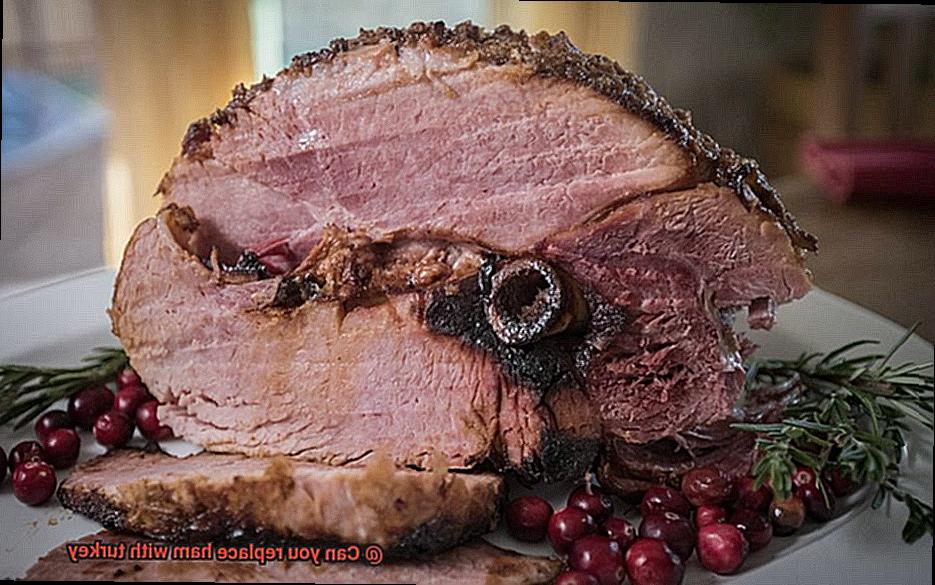
To use indirect heat, you’ll need to set up your grill with a two-zone fire. This means creating a hot zone and a cool zone. The hot zone is where you’ll place your coals or burners, while the cool zone is where you’ll place your meat. For gas grills, turn on one burner and leave the other off for the cool zone. For charcoal grills, pile your coals on one side of the grill for the hot zone and leave the other side empty for the cool zone.
Once your grill is set up, place your ham or turkey on the cool zone and close the lid. To ensure safe consumption, use a meat thermometer to check that the internal temperature of the meat reaches 165°F. Cooking times will vary depending on your meat’s size and your grill’s temperature, but as a general rule of thumb, cook your meat for 15-20 minutes per pound.
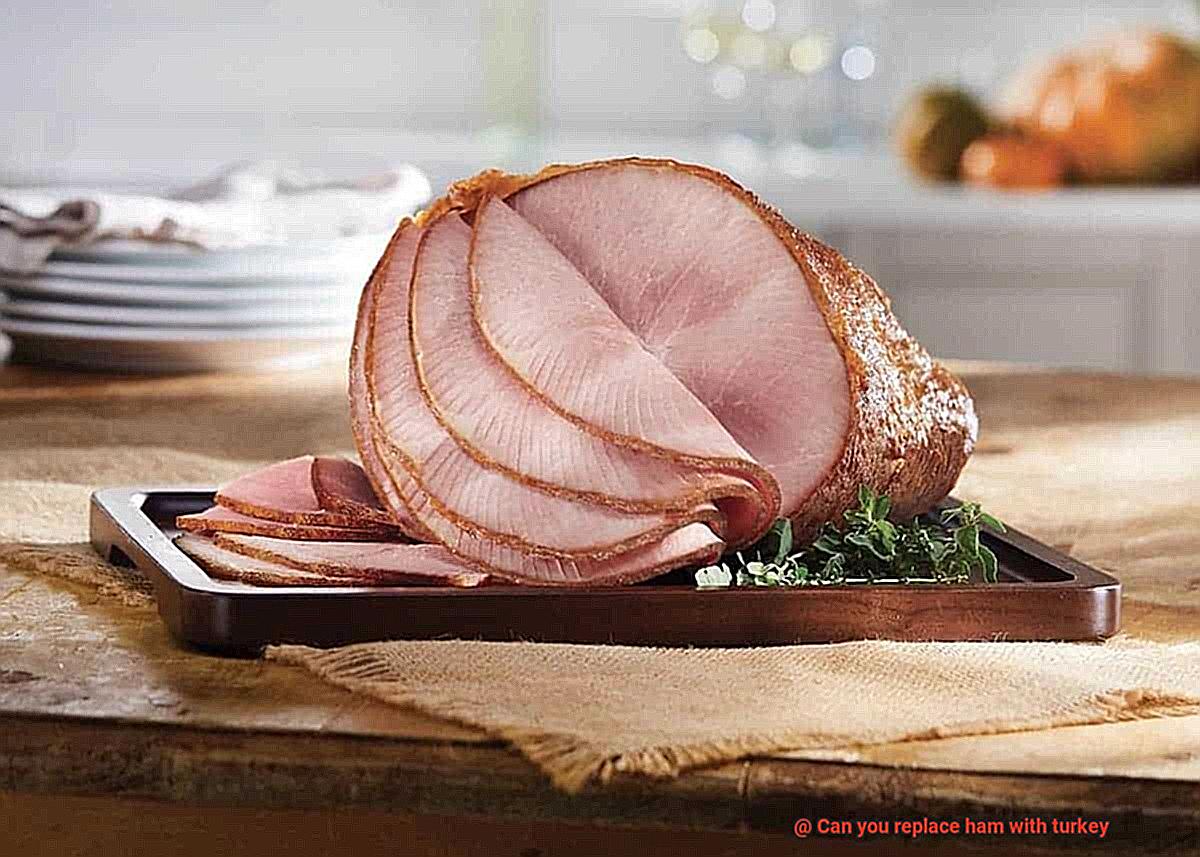
But why should you use indirect heat instead of direct heat? For one, turkey can be notoriously dry and benefit from slow cooking. Using indirect heat allows turkey to cook slowly, resulting in juicy and flavorful meat that will have everyone at your table asking for seconds. On the other hand, ham tends to be juicy and can benefit from higher heat for caramelization.
In conclusion, using indirect heat is an effective way to cook both ham and turkey on the grill. It allows for slow cooking and prevents burning or drying out of the meat. So, next time you’re grilling up some ham or turkey, remember to set up your grill with a two-zone fire and use indirect heat for mouth-watering results. Happy grilling.
Other Tips for Grilling Turkey
Grilling a turkey can be a daunting task, but with these additional tips and tricks, you can create a juicy and flavorful bird that will have your guests begging for seconds.
Proper preparation is key to a delicious grilled turkey. Begin by cleaning the bird inside and out, removing any giblets or excess fat, and patting it dry with paper towels. Consider using a brine to add moisture and flavor to the turkey. Submerge the bird in a mixture of water, salt, sugar, and herbs or spices for several hours before grilling.
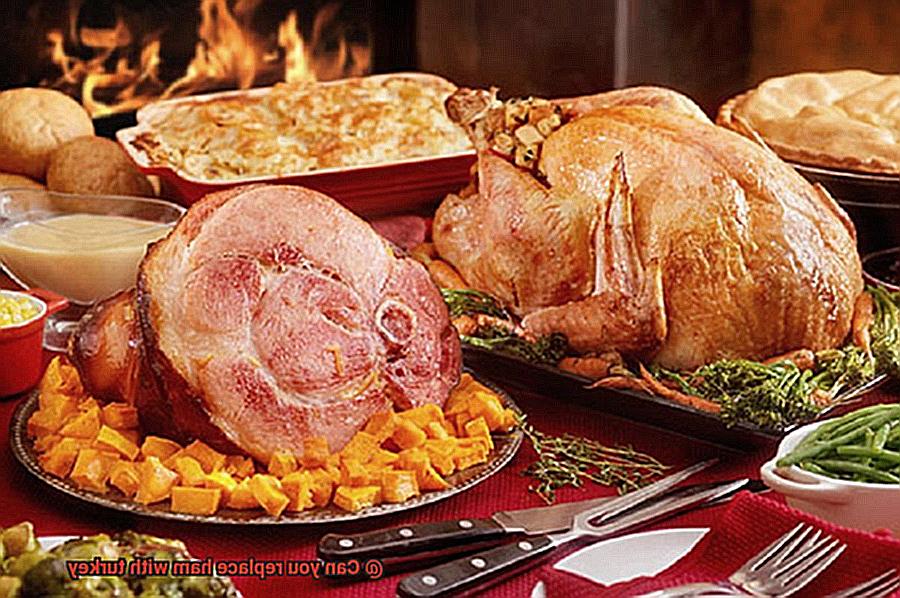
Using indirect heat is another important tip for grilling turkey. This means placing the turkey on one side of the grill away from the heat source and cooking it with the lid closed. This allows for even cooking without burning the skin and helps retain moisture.
Monitoring the temperature of the turkey is crucial for a safe and delicious outcome. Use a meat thermometer to check the internal temperature of the thickest part of the bird, aiming for 165°F. Remember to check multiple points during the grilling process to ensure even cooking.
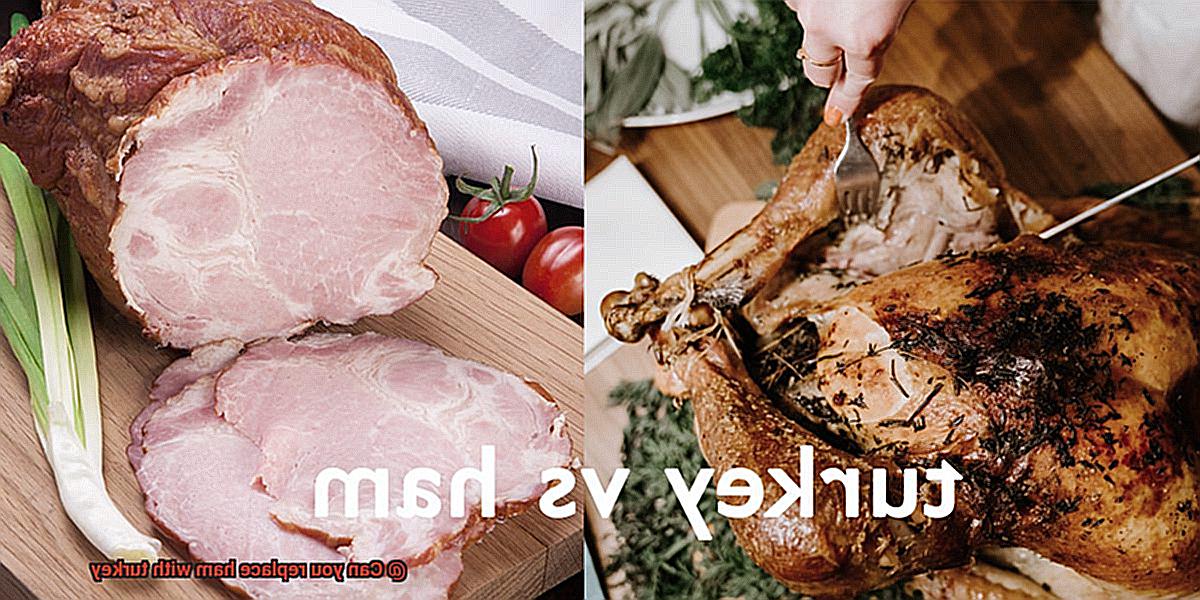
Resting the turkey after grilling is also essential for an optimal result. Allow it to rest for at least 15-20 minutes before carving to allow the juices to redistribute throughout the meat. This will result in a more flavorful and tender finished product.
Lastly, consider experimenting with different marinades or rubs to add even more flavor to your grilled turkey. Whether it’s a citrus-based marinade or a savory spice rub, there are plenty of options to explore.
ggGSOk-UCI0″ >
Conclusion
To sum up, we’ve delved into the question of whether turkey can be a suitable replacement for ham. While both meats have their own unique taste, texture, and nutritional value, they are equally versatile and scrumptious. If you’re looking to switch things up this holiday season, why not experiment with turkey as an alternative to the traditional ham?
Grilling turkey requires some essential tips to ensure a juicy and flavorful outcome. It’s crucial to use indirect heat for slow cooking and avoid burning or drying out the meat. Additionally, proper preparation, monitoring temperature, and allowing the turkey to rest after grilling are all vital steps for a safe and delectable meal.
No matter which meat you choose for your holiday feast, it’s important to select the right cut of meat and marinate it properly for maximum flavor and moisture.



